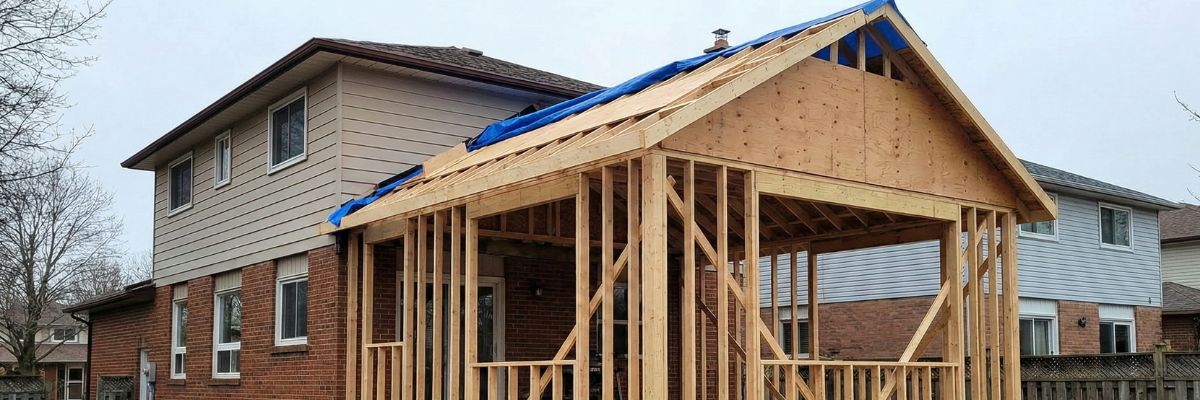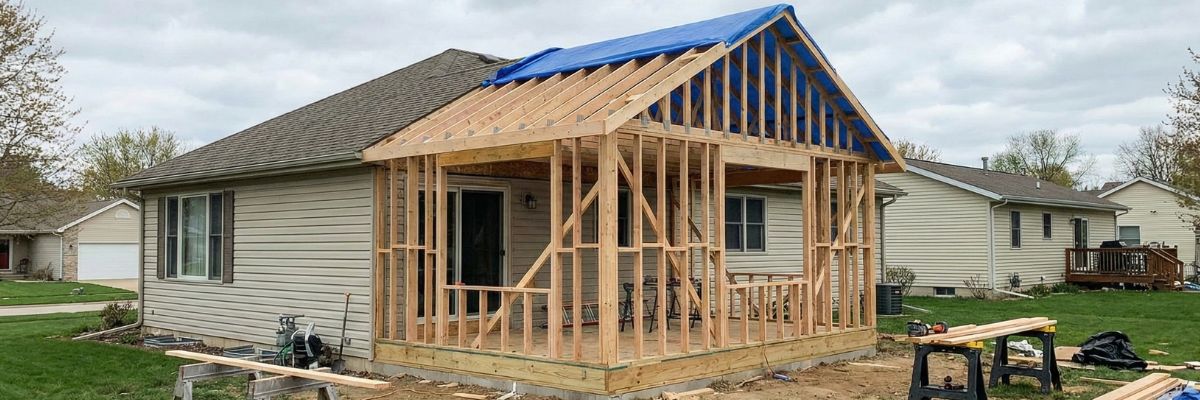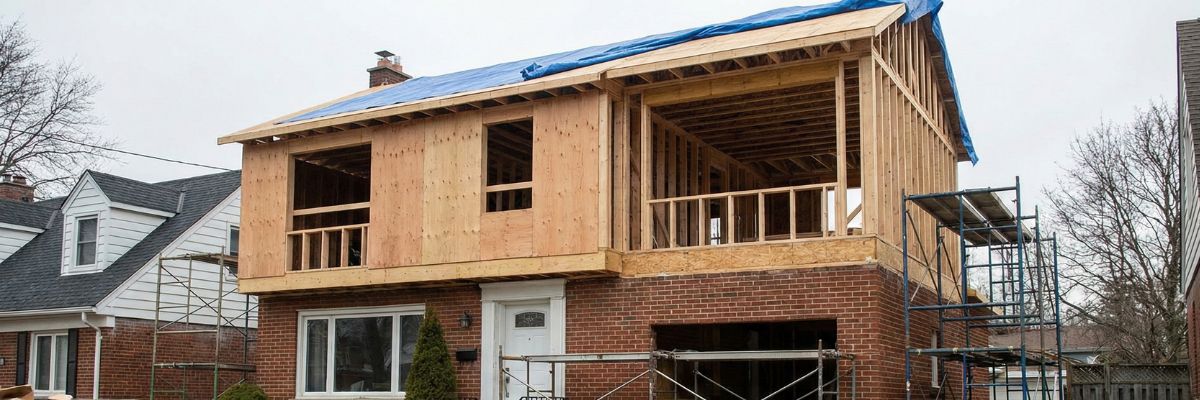How Much Does It Cost To Build A Tiny Home In Toronto?
The average cost to build a tiny home in Toronto is approximately $250,000, though prices can climb to $350,000 or more depending on various factors. The total cost is influenced by the size of the home, the quality of materials and finishes, the location and condition of the land, and the complexity of custom features or built-in amenities you choose to include. Each of these elements can significantly impact your final budget.
Keep reading to understand the full cost of building a tiny home in Toronto!
Cost Breakdown Of A Tiny Home In Toronto
What Affects the Cost of Building a Tiny Home in Toronto?
Several key factors influence the total cost of building a tiny home in Toronto. From size and layout to material choices and site conditions, each decision plays a role in shaping your final budget. By understanding these variables, you can prioritize what matters most—whether it's keeping costs down or maximizing comfort and functionality.
How Big Is Your Tiny Home?
Size is one of the most significant cost drivers when it comes to building a tiny house. Most tiny homes fall between 200 and 1,000 square feet, and the square footage directly affects the amount of materials, labor, time, and even permit requirements involved. As the size increases, so does the overall cost of the project.
Smaller Tiny Homes (200–400 Sq. Ft.)
Tiny homes on the smaller end of the scale—typically 200 to 400 square feet—are the most budget-friendly. These ultra-compact homes require fewer building materials, and construction is often quicker, especially if you’re using a prefabricated design or building it yourself.
For very simple builds with minimal custom work, costs can start around $150,000 to $200,000, particularly if the site requires limited grading or foundation work. These homes are ideal for individuals or couples who value simplicity and efficiency and are willing to compromise on space and amenities to keep expenses low.
Mid-Sized Tiny Homes (450–550 Sq. Ft.)
Homes in this size range strike a balance between livability and cost. With around 450 to 550 square feet, you have enough space for essentials like a sleeping loft, compact kitchen, and full bathroom, without crossing into the territory of a full-sized home.
This size allows for smarter layouts and more built-in storage, making it ideal for long-term living. You’ll also have more flexibility with design and finishes. The typical cost for a mid-sized tiny home in Toronto ranges from $250,000 to $300,000, depending on whether it’s custom-built or prefab, and the level of finish and features you choose.
Larger Tiny Homes (600–1,000 Sq. Ft.)
Though still classified as tiny homes by some standards, builds in the 600 to 1,000 square foot range offer significantly more space—often with multiple rooms, larger kitchens, and full-sized bathrooms. These homes are designed for small families or those seeking a more traditional living experience in a compact footprint.
However, larger size brings higher costs. You’ll need more building materials, more time on site, and potentially more complex structural work, especially if you're adding lofts, vaulted ceilings, or integrated mechanical systems. For this tier, expect costs to range from $350,000 to $500,000 or more, particularly if you opt for high-end finishes, solar systems, or custom cabinetry.

How Building Materials Impact the Cost of Your Tiny Home
The materials you choose for your tiny home can have a significant impact on the overall cost of construction. From basic, budget-conscious options to high-end and eco-friendly alternatives, material selection influences everything from upfront expenses to long-term performance and sustainability.
Budget-Friendly Material Choices
Opting for cost-effective or reclaimed materials is one of the most effective ways to keep your tiny home project within budget. Items like recycled wood, salvaged windows, or second-hand doors can often be sourced from local salvage yards or online marketplaces, reducing material costs by as much as 20% to 30%.
Inexpensive options such as plywood instead of hardwood, or vinyl siding instead of fiber cement or cedar, still offer durability while helping lower your total spend. These choices are ideal for homeowners looking to build affordably without sacrificing basic functionality or structural integrity.
Example: A modestly built tiny home using laminate countertops, vinyl flooring, and standard fixtures can remain highly functional while significantly reducing overall costs.
Premium and Eco-Friendly Material Options
On the other end of the spectrum, using premium or environmentally friendly materials can significantly increase construction costs—but also elevate the design, comfort, and efficiency of your home.
High-end choices might include sustainably harvested hardwood, cedar siding, bamboo flooring, or even steel framing for increased structural longevity. Many of these materials are selected for their aesthetic appeal, durability, or sustainability credentials, and can contribute to lower maintenance and utility costs over time.
Eco-conscious homeowners may also choose natural fiber insulation (such as sheep’s wool or cork), energy-efficient windows, or solar panels to reduce environmental impact. While these upgrades require a larger initial investment, they can provide long-term value through reduced energy use and greater resilience.
Example: A high-spec tiny home finished with cedar cladding, reclaimed hardwood floors, energy-efficient glazing, and quartz countertops will command a much higher price, but offers enhanced performance, resale value, and a luxurious living experience.
What Amenities Will You Include in Your Tiny Home?
The amenities you choose for your tiny home play a major role in determining both the initial construction cost and your long-term living experience. From basic utilities to luxury upgrades and space-saving features, these selections impact everything from daily comfort to resale value.
Essential Amenities for Functionality
At a minimum, a livable tiny home should include core necessities such as a compact kitchen, a functional bathroom, and basic appliances. These homes are built with a focus on affordability and practicality, using simplified layouts and scaled-down systems.
Standard features might include:
- A simple kitchenette with a small stove, fridge, and sink
- A bathroom with a shower and composting or standard toilet
- Compact appliances such as a mini-fridge, tankless water heater, or combination washer/dryer
- Basic lighting and electric heating solutions
Opting for energy-efficient LED lighting, off-the-shelf fixtures, and combination appliances can help save space and reduce total installation costs.
Example: A no-frills tiny home equipped with electric appliances, standard plumbing fixtures, and basic finishes might budget $15,000 to $25,000 for all essential amenities.
Luxury and High-Tech Upgrades
If comfort, sustainability, or smart technology is a priority, high-end amenities can dramatically increase your budget—but also elevate your lifestyle. These upgrades not only improve convenience but may also lower utility bills and increase the home’s resale value.
Popular premium features include:
- Solar panels and energy storage systems
- Mini-split HVAC systems for heating and cooling
- Smart home integrations like automated lighting, thermostats, and security cameras
- Luxury kitchen appliances, such as built-in convection ovens, dishwashers, or full-sized fridges
- Upscale bathroom fixtures, like rainfall showers, vessel sinks, or deep soaking tubs
While these additions improve performance and personalization, they come at a cost.
Example: A fully outfitted tiny home with radiant floor heating, solar energy, high-efficiency appliances, and smart controls could add $80,000 to $100,000 or more to the total cost.
Space-Saving Furniture and Built-Ins
Maximizing space is crucial in tiny home design. Specialized furniture and built-in solutions help improve livability without increasing square footage. These features make the most of every inch and contribute to a clean, functional layout.
Common space-saving elements include:
- Murphy beds or fold-out sleeping platforms
- Built-in benches with storage
- Convertible tables that function as desks or dining areas
- Wall-mounted shelves and modular cabinetry
- Multi-use staircases with integrated drawers or closet space
While these design elements boost utility, custom carpentry or multifunctional furniture can add thousands to your build budget, especially if made to order.
Example: Incorporating a custom-built Murphy bed, fold-down dining table, and integrated storage solutions can increase your build cost by $5,000 to $15,000, depending on materials and craftsmanship.
Is It Cheaper to Buy or Build a Tiny Home in Toronto?
Whether it's more cost-effective to buy a pre-built tiny home or hire a contractor to build one from scratch depends on several factors—such as your budget, timeline, customization preferences, and the condition of your site. Below, we compare the pros, cons, and hidden costs of both options so you can decide which approach makes the most sense for your goals.
Buying a Pre-Built Tiny House
Buying a pre-fabricated or ready-made tiny home is often seen as the more affordable and convenient route—especially for those on a tight budget or looking to move in quickly.
Pros of Buying Pre-Built:
- Lower Upfront Cost: Prefab tiny homes typically range from $50,000 to $100,000 for basic models. This is significantly less than a custom build, making it appealing for budget-conscious buyers.
- Quick Turnaround: Pre-built homes are often available with short lead times or even immediately. This makes them a great choice if you need housing on a tight schedule.
- Known Design and Price: You know exactly what you're getting in terms of layout, materials, and finishes. There’s less guesswork involved compared to a ground-up build.
Cons of Buying Pre-Built:
- Limited Customization: While some models offer minor personalization (e.g. finish colors or floor plans), you won’t get the same level of control over layout, materials, or features as you would with a custom build.
- Variable Quality: Lower-cost models may be constructed with budget materials or simplified techniques, potentially leading to higher long-term maintenance or repair costs.
- Hidden Site Costs: Pre-built homes often don’t include delivery, setup, or site work—such as grading, foundation installation, or utility connections. These services can add $50,000 to $150,000+, depending on the location and complexity of the site.
Typical Cost Summary for Pre-Built Homes:
- Base Cost: $25,000 – $70,000 (for prefab or mobile models)
- Additional Site Costs: $50,000 – $150,000+
- Customization: Minimal
- Timeline: Immediate to a few weeks
- Risks: Unforeseen setup costs, lower material quality
Hiring a Contractor to Build a Custom Tiny House
Choosing to work with a contractor gives you full control over the design and construction of your home—but it also comes with a higher price tag and longer timeline.
Pros of Building with a Contractor:
- Total Customization: You have complete freedom to design your layout, select high-end or eco-friendly materials, and include features that match your lifestyle—like smart home systems, solar panels, or custom cabinetry.
- Higher Quality Construction: Professional builders can use more durable materials and follow best practices to ensure a well-insulated, long-lasting structure.
- Zoning and Code Compliance: Experienced contractors are familiar with local building codes and permitting processes in Toronto, which helps prevent costly legal or structural issues.
- Turnkey Delivery: A contractor can manage everything from site prep to utility hookups, reducing the burden of coordinating different service providers yourself.
Cons of Custom Builds:
- Higher Total Cost: A contractor-built tiny home typically costs $200,000 to $350,000+, depending on the size, finishes, and custom features included.
- Longer Timeline: Building from scratch often takes 4 to 6 months or more, depending on complexity, weather, and material availability.
- Budget Uncertainty: Even with careful planning, unexpected costs—such as permitting delays, site issues, or design changes—can push your project over budget.
Typical Cost Summary for Contractor-Built Homes:
- Build Cost: $200,000 – $350,000+
- Site Prep & Utilities: Usually included in the contractor’s scope
- Customization: Full flexibility
- Timeline: 4–6+ months
- Risks: Project delays, cost overruns due to customizations or unforeseen issues
What Is the Most Expensive Part of Building a Tiny Home?
The most significant expenses in building a tiny home are labor and materials, which together can account for 30% to 60% of the total project cost. Hiring skilled professionals—such as contractors, electricians, plumbers, and finish carpenters—is essential for ensuring the home meets safety standards and building codes, especially when your design includes custom features, like built-in furniture, lofted spaces, or complex layouts.
While a DIY approach can reduce labor costs, tasks like electrical wiring, HVAC installation, and plumbing almost always require licensed trades. These specialized services can add substantial costs, even on a small-scale build.
Material selection also plays a critical role in the final budget. High-end or eco-friendly materials—such as reclaimed hardwood flooring, stone countertops, cedar siding, or energy-efficient windows—can drive costs significantly higher than more affordable options like vinyl flooring, laminate countertops, or composite panels. Similarly, custom cabinetry, designer fixtures, or luxury finishes can elevate the aesthetic but also increase spending.
In summary, labor and materials are the two biggest cost drivers when building a tiny home—especially if you’re prioritizing customization, sustainability, or high-quality finishes.
Do Tiny Homes Hold Their Value?
Tiny homes can hold their value well—but not always in the same way as traditional homes. Several key factors influence long-term value retention, including location, construction quality, and property ownership.
Tiny homes built on permanently owned land in desirable areas tend to retain value better than mobile units or those in less developed locations. Land ownership adds intrinsic value to the property and can increase the home’s resale appeal. In contrast, tiny homes on wheels may depreciate more like RVs or trailers, especially if not properly maintained or permanently installed.
Construction quality also plays a major role. Homes built with durable materials, thoughtful design, and code-compliant systems are more likely to maintain their value over time. Regular maintenance and upgrades—such as roof care, appliance updates, or energy efficiency improvements—can further extend the home's lifespan and marketability.
While tiny homes may not appreciate at the same rate as traditional single-family residences, they can retain strong resale value when well-built, professionally maintained, and located in areas where demand for small, efficient housing is growing. As the tiny home movement gains popularity, demand continues to rise—contributing to stronger value retention across the market.
Takeaway
In Toronto, the average cost of a tiny home is around $250,000, with more customized and luxurious options ranging upwards of $350,000. Whether you're looking for a simple, budget-friendly build or a fully customized tiny home, there are plenty of options to fit your needs and lifestyle.
If you're considering building a tiny home in Toronto, reach out to Toronto General Contractors for a free, no-obligation quote. Our experienced team can help you design and build the perfect tiny home that suits your vision and budget. Contact us today to get started on your dream tiny home project!
Frequently Asked Questions About Tiny Homes In Toronto
Are tiny homes legal in Toronto?
Yes, tiny homes are legal in Toronto if they meet zoning bylaws and building codes. They’re typically allowed as secondary units like laneway or garden suites.
What is considered a tiny home in Toronto?
A tiny home is generally any dwelling under 400 sq. ft. (37 m²). The Ontario Building Code sets the minimum at 188 sq. ft. (17.5 m²).
Where can I legally put a tiny home in Toronto?
You can place a tiny home on your property if it complies with zoning and building codes. They’re often used as ADUs like laneway or garden suites, and rare community lots may also allow them.
What are the zoning and permitting requirements?
You must follow local zoning rules, including setbacks and maximum sizes, and get the proper building permits. In Toronto, most tiny homes must be under 60 m² and at least 1.2 m from property lines.
Can I live in a tiny home year-round in Toronto?
Yes, you can live in your tiny home year round as long as your tiny home meets Toronto building and zoning regulations. Always confirm neighborhood-specific rules with the city.
What are the main challenges to building or living in a tiny home in Toronto?
Common challenges include navigating zoning laws, finding legal land, getting permits, and ensuring utility and emergency access. Landscaping and tree preservation can also add complexity.
How do I connect utilities to a tiny home?
Utility connections must follow city procedures and meet all inspection requirements. This includes water, sewer, and electrical hookups.
Do tiny homes have to meet the same building code as traditional houses?
Yes, tiny homes must meet the Ontario Building Code. This includes safety, structural, plumbing, and electrical standards.
Can I build a tiny home on wheels and park it in Toronto?
Tiny homes on wheels are typically treated as RVs and face more restrictions. They usually aren’t allowed as permanent residences in most residential zones.
What steps should I take before building or buying a tiny home in Toronto?
Start by researching zoning laws, consulting the city, and securing a compliant lot. Then get all necessary permits and plan for utility access. Or reach out to Toronto General Contractors to simplify the process of building a tiny home!

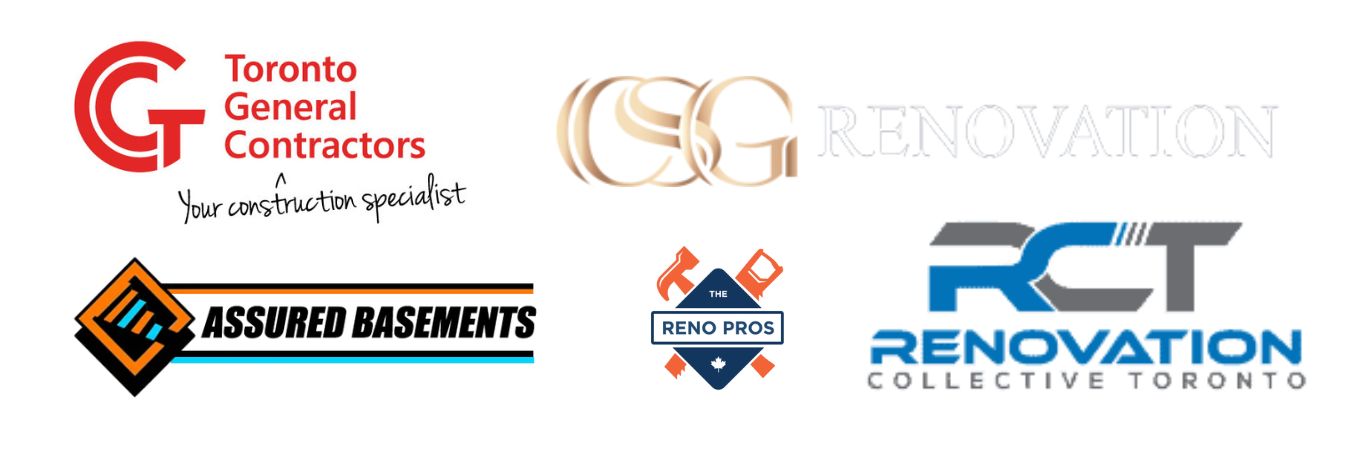
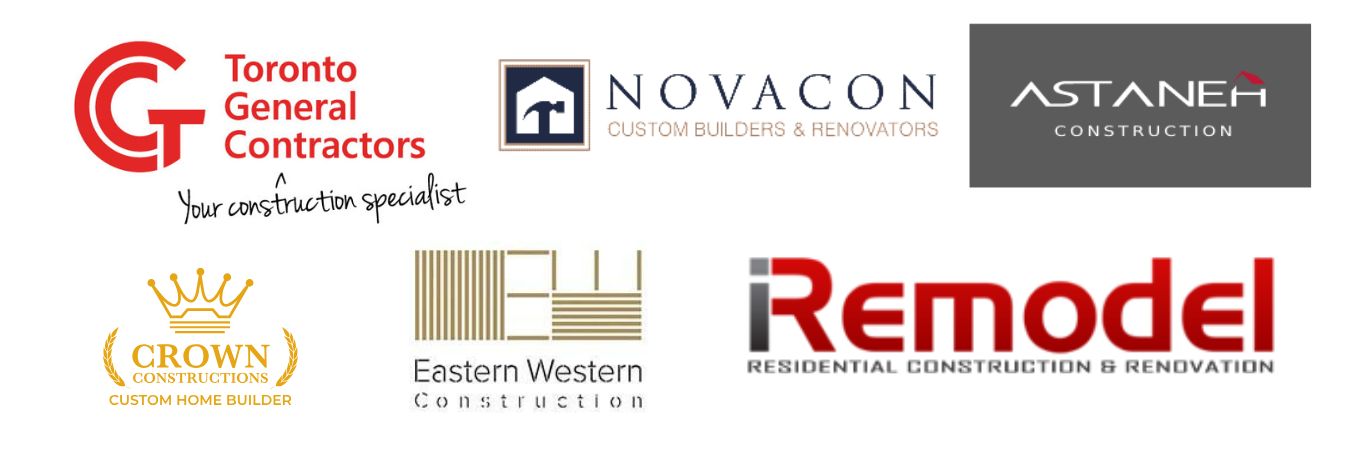
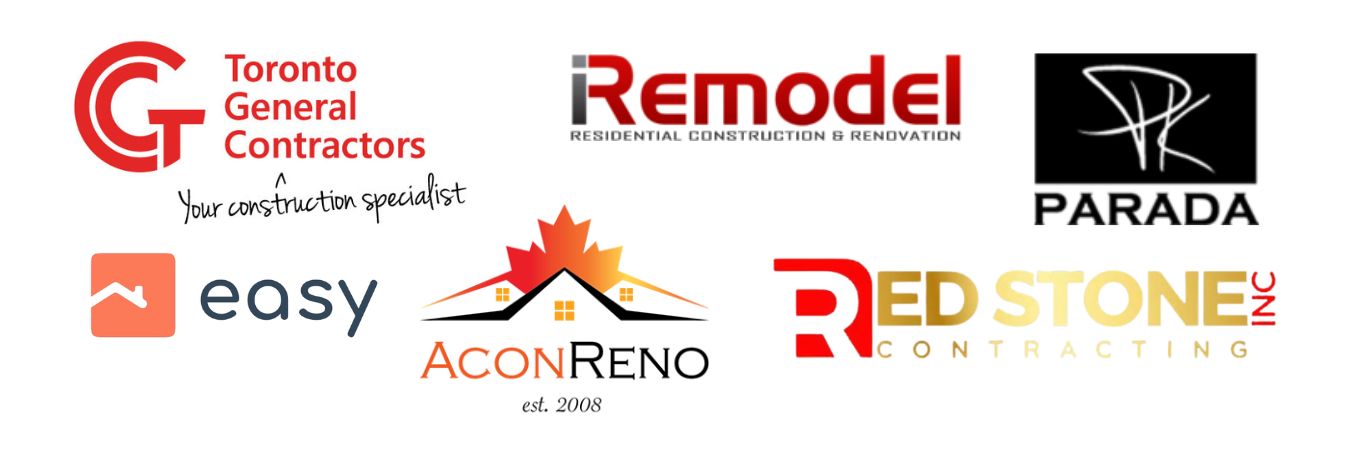

.jpg)
